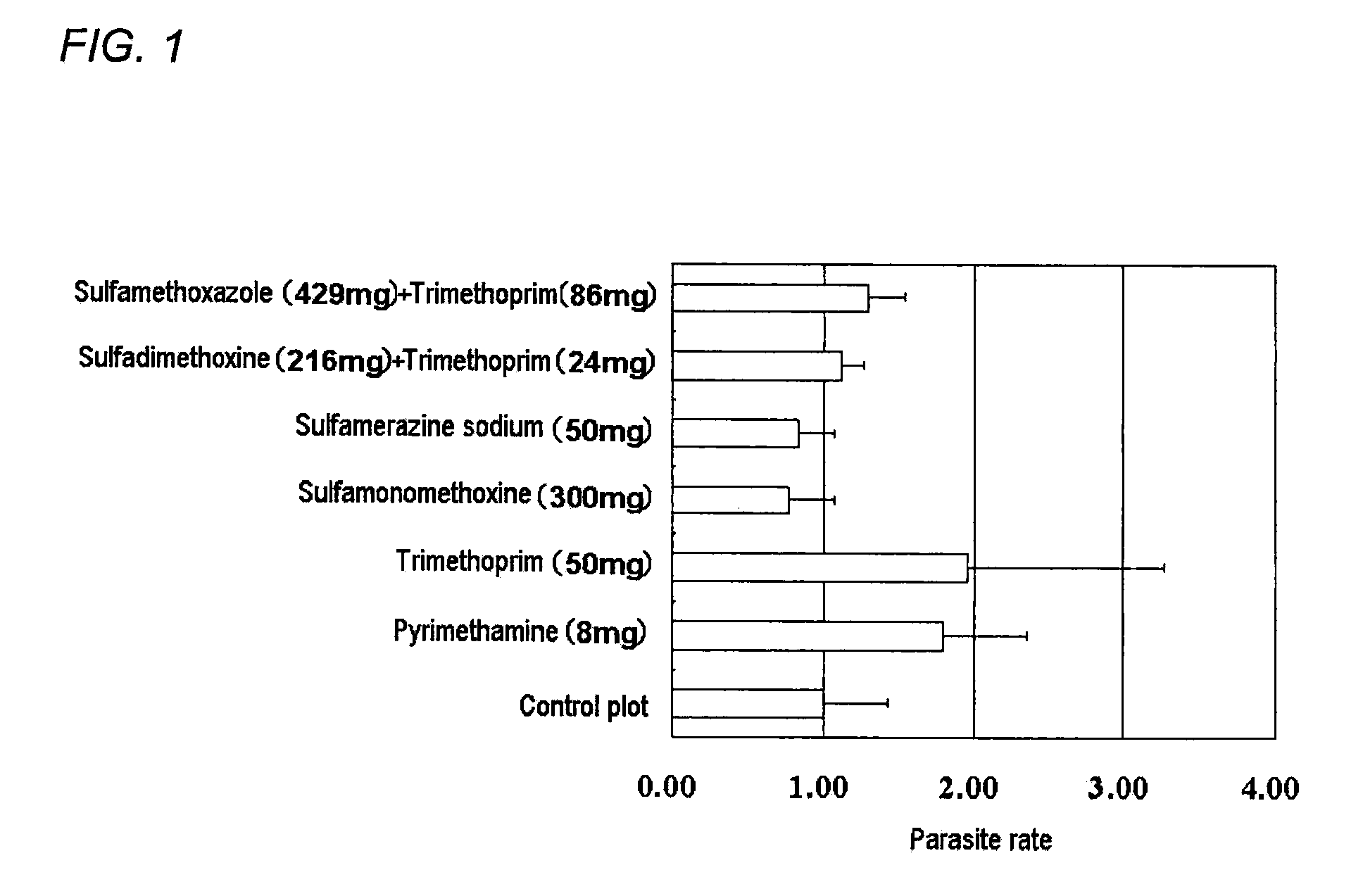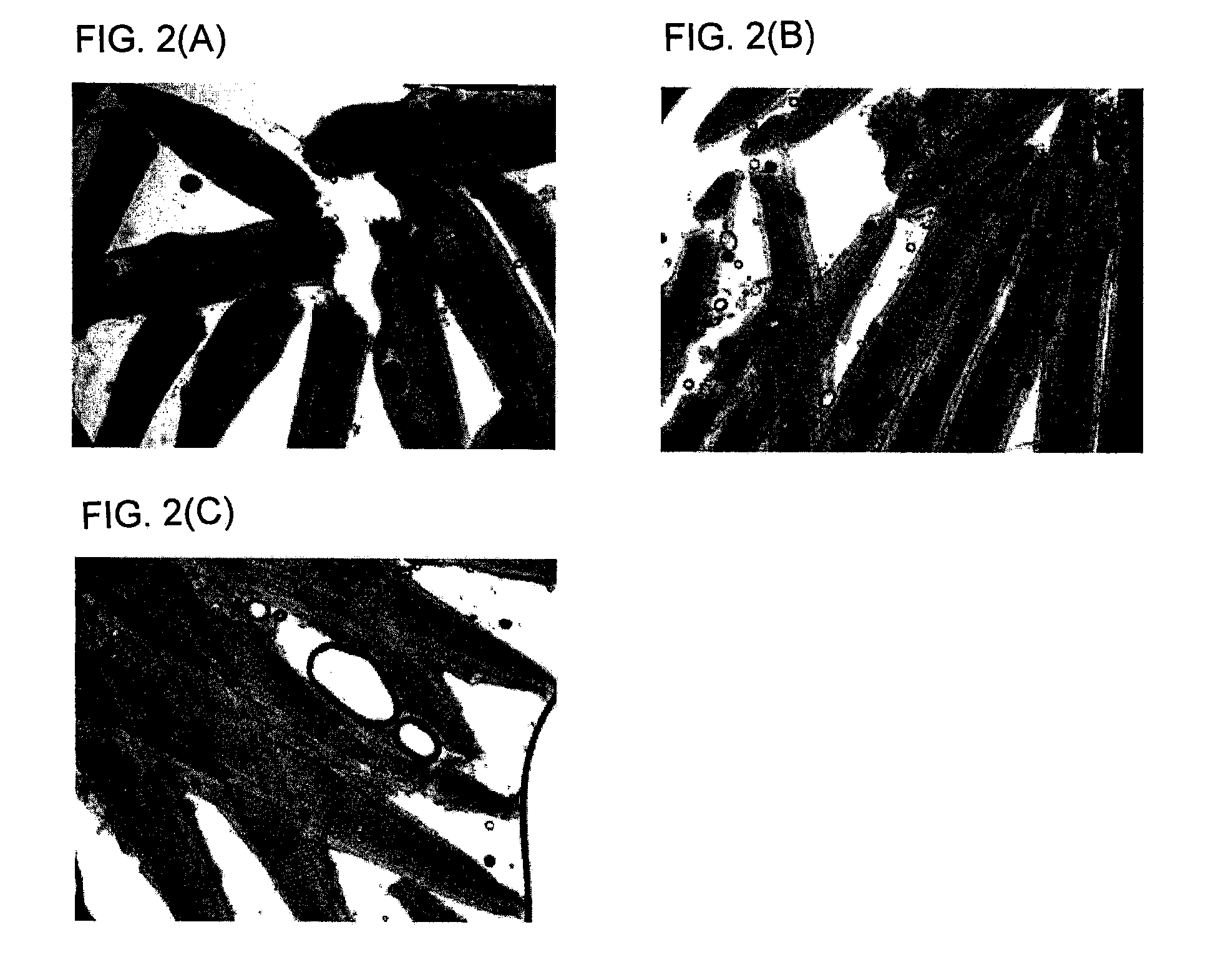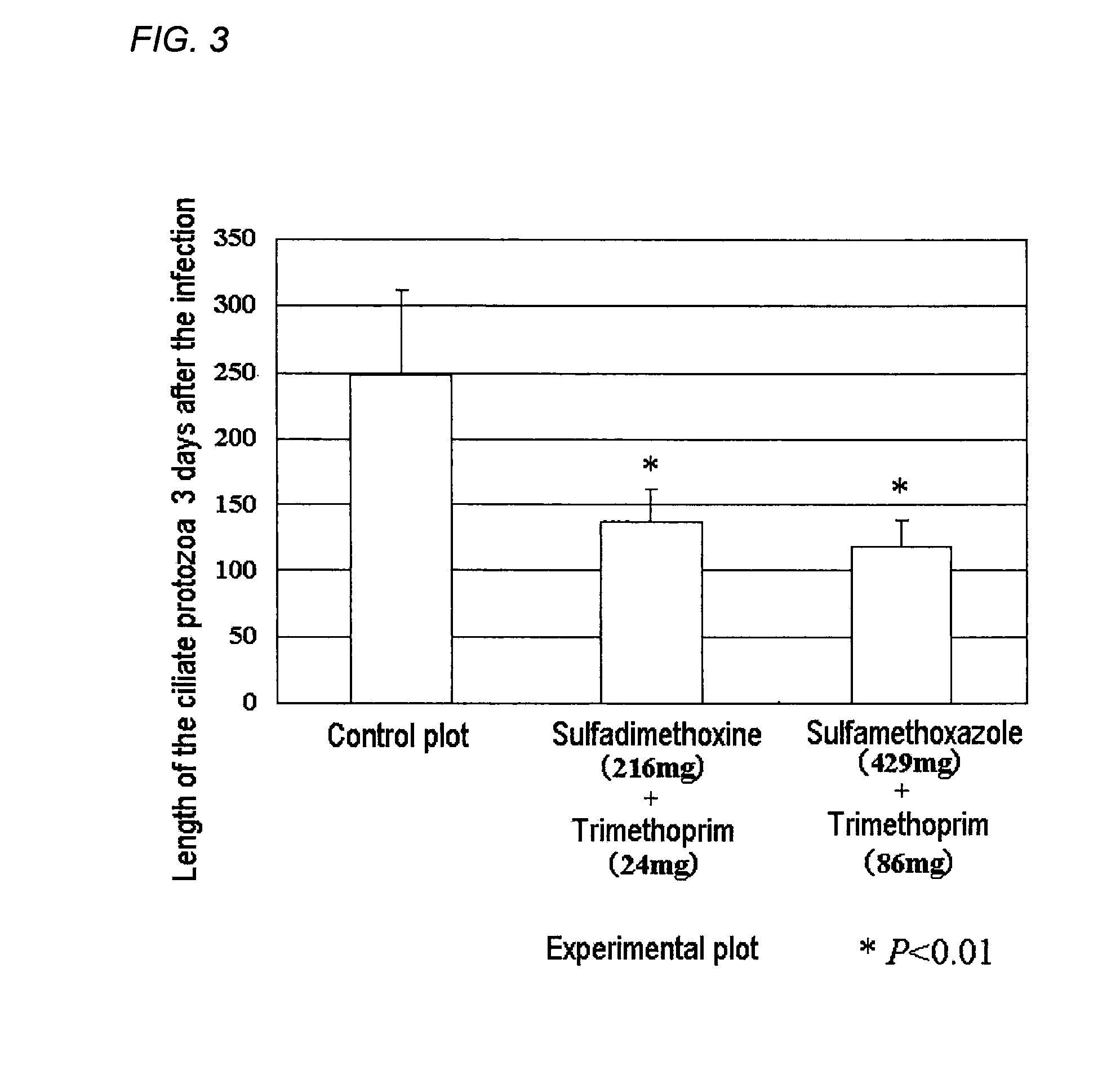Antiparasitic agent for fish and method of controlling proliferation of fish parasites
- Summary
- Abstract
- Description
- Claims
- Application Information
AI Technical Summary
Benefits of technology
Problems solved by technology
Method used
Image
Examples
example 1
Parasiticidal Effect of the Oral Administration of an Inhibitor of Folate Synthesis and an Inhibitor of Folate Activation on the Parasitism of Cryptocaryon irritans on Pagrus major (1)
[0079]Test method: Seventy Pagrus major with an average weight of 20 g were reared for approximately 7 days in a 200-liter aquarium and were acclimatized to a water temperature of 25° C. During that time, commercial feed (manufactured by Nippon Suisan Kaisha, Ltd.; early phase feed EP (expanded) pellets with a diameter of 2.5 mm) was given, and the feeding rate was 2 wt % of fish body weight daily. Seawater supply was set at 2.4 liters per minute. For the parasitic infection, the seawater supply to the 200-liter aquarium was stopped and approximately 200,000 Cryptocaryon irritans hatched larva were put into the aquarium, then the fish were exposed to the parasites for 1 hour. After exposure, ten fish each were moved into seven 100-liter aquariums. During the rearing period, 1.2 liters / min. of seawater ...
example 2
Parasiticidal Effect of the Oral Administration of an Inhibitor of Folate Synthesis and an Inhibitor of Folate Activation on the Parasitism of Cryptocaryon irritans on Pagrus major (2)
[0083]Test method: Twenty-four Pagrus major with an average weight of 39 g were reared for approximately 7 days in a 200-liter aquarium and were acclimatized to a water temperature of 25° C. During that time, commercial feed (manufactured by Nippon Suisan Kaisha, Ltd.; early phase feed EP (expanded) pellets with a diameter of 2.5 mm) was given, and the feeding rate was 2 wt % of fish body weight daily. Seawater supply was set at 2.4 liters per minute. For the parasitic infection, the seawater supply to the 200-liter aquarium was stopped and approximately 170,000 Cryptocaryon irritans hatched larva were put into the aquarium, then the fish were exposed to the parasites for 1 hour. After exposure, eight fish each were moved into three 100-liter aquariums. During the rearing period, 1.2 liters / min. of sea...
example 3
Parasiticidal Effect of the Oral Administration of an Inhibitor of Folate Synthesis and an Inhibitor of Folate Activation on the Parasitism of Cryptocaryon irritans on Pagrus major (3)
[0087]Test method: Fifty-six Pagrus major with an average weight of 91 g were reared for approximately 12 days in a 500-liter aquarium and were acclimatized to a water temperature of 25° C. During that time, commercial feed (manufactured by Nippon Suisan Kaisha, Ltd.; early phase feed EP (expanded) pellets with a diameter of 2.5 mm) was given, and the feeding rate was 2 wt % of fish body weight daily. Seawater supply was set at 2.4 liters per minute. For the parasitic infection, the seawater supply to the 500-liter aquarium was stopped and approximately 500,000 Cryptocaryon irritans hatched larva were put into the aquarium, then the fish were exposed to the parasites for 1 hour. After exposure, seven fish each were moved into eight 100-liter aquariums. During the rearing period, 1.4 liters / min. of seaw...
PUM
| Property | Measurement | Unit |
|---|---|---|
| Dimensionless property | aaaaa | aaaaa |
| Body weight | aaaaa | aaaaa |
Abstract
Description
Claims
Application Information
 Login to View More
Login to View More - R&D
- Intellectual Property
- Life Sciences
- Materials
- Tech Scout
- Unparalleled Data Quality
- Higher Quality Content
- 60% Fewer Hallucinations
Browse by: Latest US Patents, China's latest patents, Technical Efficacy Thesaurus, Application Domain, Technology Topic, Popular Technical Reports.
© 2025 PatSnap. All rights reserved.Legal|Privacy policy|Modern Slavery Act Transparency Statement|Sitemap|About US| Contact US: help@patsnap.com



